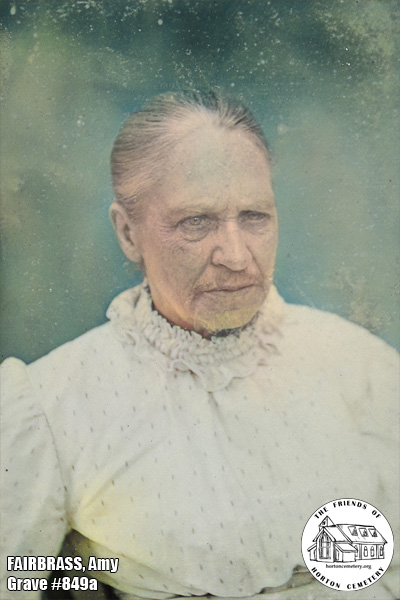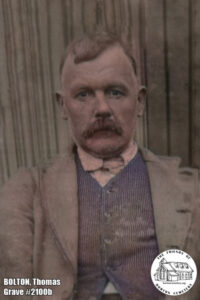b.1837-d.1910
Amy’s parents
Amy was born in 1837 in Bermondsey, as Amey Presley. There is an entry in the GRO for Amey Presley, March quarter, in 1838 in the registration distict of St Mary Newington. Her mother’s maiden name was Clamp.
I found a baptism record for Amey Presley for 18 October 1837, at St George the Martyr, Southwark. Her birth date is given there as 13 August 1837. Her father is listed as Henry Francis Onion Presley and her mother as Milldey. Henry had been born on 11 November 1811 and baptized in St George the Martyr as well. He was baptized on 25 December 1811. He was the son of James and Ann.
Amy’s parents married on 24th July 1836 at St Mary Newington.
The 1840s
In the 1841 census, we can see Amy, age 4, living in Little Hurze Court, in the parish of St Olave, Southwark. She is with her father Henry, a porter, age 25, her mother (now spelt Milli), age 20, her grandmother, Amey Clamp, age 60, and James Clamp, 15, a groom, another family member.
The 1850s
The 1851 census gives us more information about the family: they are still in Southwark, this time in the parish of St Saviour’s. Henry is a carman, so would have driven a vehicle to transport goods. Also present in the household is his cousin John Presley, another carman, age 47 and John’s children, Elizabeth age 11, Ellen age 8, John 6 and Jane 3. (His wife has just died). Amy’s mother is now transcribed as “Amelia”, age 33 from Newington. Amy is aged 13 and a scholar.
In 1855, at the age of 18, Amy marries. Her husband is Charles Edwin Spencer. The marriage takes place at the church of St Mary Newington on Christmas Day. She has signed her marriage certificate but not everyone was literate at that time. (The Elementary Education Act providing schooling for children between 5 and 12 was not brought in until 1870.) Charles is a millstone maker, living in Cole street and Amy is listed at the same address. Her father Henry is still a carman. Charles’s father, Edward, is a cooper.
The 1860s
By the 1861 census, Amy appears to be living with her parents again at 13 Cole street in Newington. Charles is not there, however. (There are two other families living at the property, suggesting they were quite poor.)
I did however find a record for a Charles Spencer, a millstone maker in Kingston Upon Hull, in Yorkshire. His father is also called Edward and is a cooper as per his marriage certificate. The census states he is unmarried but is this him? If so, has he left Amy or has he just returned to his home town for work?
By September 1861, Amy’s father Henry had died.
In 1865 there is a record for Charles Edwin Spencer dying in Newington, so he must have returned to London. Amy is now a widow.
The 1870s
In 1871 Amy is living in Pleasant Place, Lambeth, with her mother and her stepfather Charles Postan. Amy doesn’t have a profession which suggests she is being supported by her family.
In 1877 Amy’s mother dies. We can see from the probate address that Amy was still living with her in Pleasant Place, Lambeth. (Charles had died in 1872) Amy is named as a widow and the sole executor. Mille’s effects are listed as under £1,000 which is worth approximately £150,000 in today’s money. I wonder if Amy was her next of kin? If so, did she inherit this money? I can’t find a record to suggest she did. If she had, her life might have been very different.
The 1880s
It’s 18th April 1880. Amy appears to marry for the second time to George Fairbrass, in St Botolph Without, Bishopsgate, in the City of London. She is listed in the register as Amy Spencer, a widow. George is a widower. They are both 42 years old. George is a labourer. They are both living at 8 Brushfield Street, nearby.
In the 1881 census, Amy and George are living at 34 East Road, Camberwell, in a shared house. George is a brewer’s labourer, born in Canterbury. They appear to have two daughters but these are from George’s first marriage to Amelia Huggins, Amey Ann age 14 (born 14 February 1868) and Harriet aged 8 ( born 17 Aug 1872).
Admitted to the workhouse
Life must have been hard, however, as on 24 August 1883, I found the first workhouse entry for Amy, going into Newington Workhouse, West Moreland Road, only a short time after she remarried. In the ‘observations’ box we can see “sick”. She is listed as a needlewoman by occupation.
On 23 October 1883 she is discharged. On the notes we have “taken by friends”. Why not by her husband, I wonder? Is this the same stay? I could find no other discharge records before then. The Record is for the infirmary, which suggests she was ill all this time.
Admitted to the asylum
On 22 May 1884 there is an entry for Amy going into St Saviour’s Union, St George’s, Mint Street. On the 23rd she is discharged to an asylum.

There is a corresponding entry for an Amy Fairbrass in the UK Lunacy Patient Admissions Register. She is being sent to Coulsdon. This would be Cane Hill Asylum. According to the register, she was discharged on 17 Aug 1887, “not improved”, so presumably transferred elsewhere (the 1887 records are not online).
We find her again in the 1891 census. She is with a family called the Herlocks, In Bermondsey. it is not clear what the relationship is. Amy is listed as a visitor. Where is George now, we wonder? I couldn’t find him in the census records of 1891.
The 1900s
In the 1901 census, Amy is living alone in one room it appears. She is listed as married and a charwoman, age 63. It is a multiple occupancy building in Kent Road, Southwark. Everyone there has a low paid occupation, such as machinist or labourer. Where is George again? I still found no record for him.
Just a few months later however on 29 June 1901, Amy is back in the workhouse at St George’s, Mint Street. Is this because she was alone and destitute? She is now in her sixties.
George ‘destitute’
I did however find several workhouse records for George from 1900 onwards.
For example on 15.02.1900 he was admitted to Mint Street Workhouse, in the Parish of St George the Martyr, Southwark.
In 1901 on July 8th he was discharged from, Christchurch workhouse, Southwark, with the observation “destitute”
It must have been too difficult for them to stay together.
Entry into Newington Workhouse
On August 7th ? 1903 Amy goes into the workhouse for the final time. Her entry says, calling/occupation “charing,” her religion Church of England, birth 1837 and the ‘aged & infirm’ box is ticked, parish from which admitted St George’s, her status was married.
Transfer to Manor Asylum – and George’s death
On August 12th 1903, Amy was discharged, under the classification ‘aged and infirm’, (she was 66) to Manor Asylum. However, I couldn’t find her entry in the UK Lunacy Register.
George died in the December quarter of 1904 in Camberwell, shortly after Amy was admitted to Manor. He was 68.
In Manor Asylum – Amy’s mental and physical state
Her Manor case book notes show the cause of her insanity as senility (which usually means a loss of mental faculties in old age). Her medical certificate states “she claims she is a lump of nothing”. Observations include “she has no memory and is very worried” This suggests a very tired and fragile old lady.
Progress reports in her first few days at Manor refer to her being restless and depressed, with no idea of time or place. After a month there, she is “refusing food” and in “poor health”. By October “she will do nothing for herself” and is “wet and dirty”. Was there no personal care, we wonder?
By 1905 they start to mention she is resistive and troublesome, so she obviously struggled there and “was very lost mentally”.
By 1908 the log book shows Bright’s disease, which is now known as nephritis, or inflammation of the kidneys. Later notes suggest she remains in the same condition and there is no improvement.
In 1909 she is bruised, caused by a patient hitting her “with a boot”.
Amy’s death
By 1910 she is bedridden and doesn’t recover. She dies on 26th August from heart disease and Bright’s disease. She was 73. She had spent 7 years of her life at Manor Asylum.
Amy was then buried in plot 849a at Horton Cemetery on 01 September 1910.
Author’s comments
As she became older she was in and out of the workhouse all the time. We assume this was normal for many older people on the poverty line at the time. She had a very hard life, her husband was in a similar situation so could not support her and the asylum was the only option for long term care.




